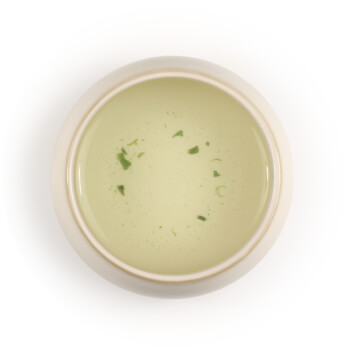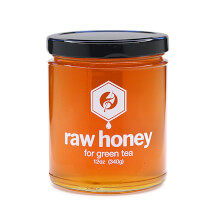96
shincha sencha
based on 34 reviews
Your savings will grow with each shipment. Save 5% now, and up to 15% in the future. Please select size:
sample
May 2025 harvest
$9
1.5oz
May 2025 harvest
$29

Shincha Sencha celebrates Japan’s first harvest of spring — a fresh, vibrant expression of Shizuoka’s mountain tea gardens near Mount Fuji. Lightly steamed in the asamushi style, this early-season sencha preserves its soft floral aroma, gentle umami, and notes of toasted macadamia and spring greens.
The result is a bright, clean cup that captures the energy of the new season — a must-try for anyone who loves authentic Japanese green tea at its freshest.
In the Japanese tea tradition, the texture of the tea itself is extremely important. At the end of the tea making process, the tea master will carefully blend in tiny, broken up 'tea dust' to give the finished cup more body and richness. You can actually see these particles when you scoop out your tea. You also see them in your cup - Sencha should have a lovely, slightly cloudy appearance. This contributes to the 'umami' of the tea (the 5th taste - the others being sweet, salty, sour and bitter). Taste and enjoy the added richness umami gives your cup of tea.
In the Japanese tea tradition, the texture of the tea itself is extremely important. At the end of the tea making process, the tea master will carefully blend in tiny, broken up 'tea dust' to give the finished cup more body and richness. You can actually see these particles when you scoop out your tea. You also see them in your cup - Sencha should have a lovely, slightly cloudy appearance. This contributes to the 'umami' of the tea (the 5th taste - the others being sweet, salty, sour and bitter). Taste and enjoy the added richness umami gives your cup of tea.
Green Tea | Moderate caffeine | Steep at 165° for 2 mins
Tea Timer
Customer Reviews (34)
Lore
Renowned for its unparalleled views of Mt. Fuji, Shizuoka is a prefecture situated on Honshu's Pacific coast. As the largest tea producing region in Japan, Shizuoka is responsible for growing approximately 40% of the ocha, or green tea.Shizuoka is home to unique terrain, mineral-rich soil, four distinct seasons, and adequate rainfall with dense coastal fog; all of the necessary elements for growing exceptional tea. Green tea plantations in Shizuoka date back to 1241 when a monk by the name of Shoichi Kokushi planted green tea seeds there that he has obtained while on a trip to China.
